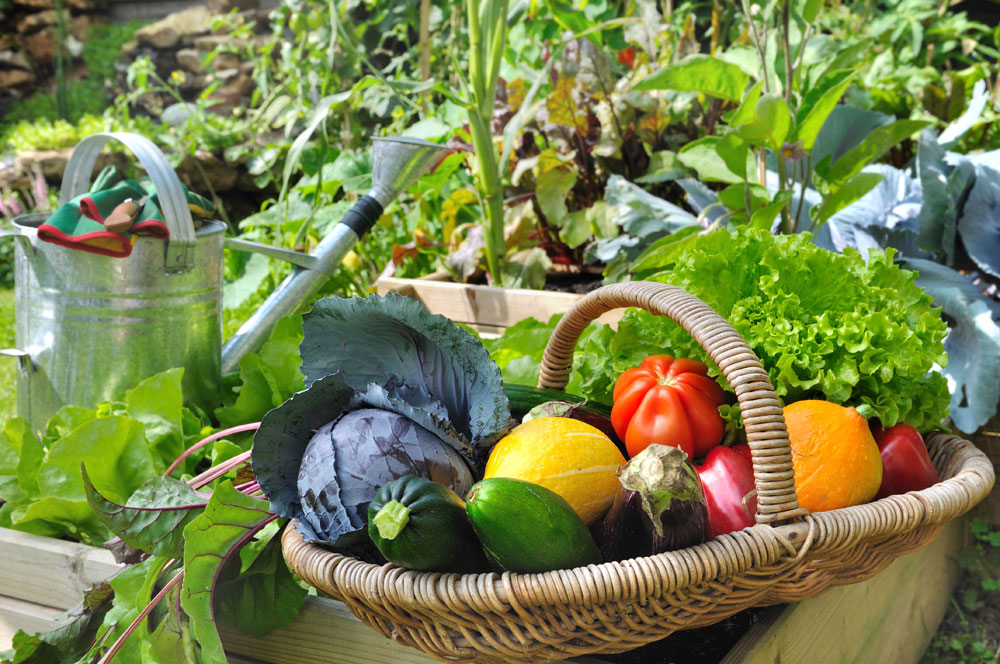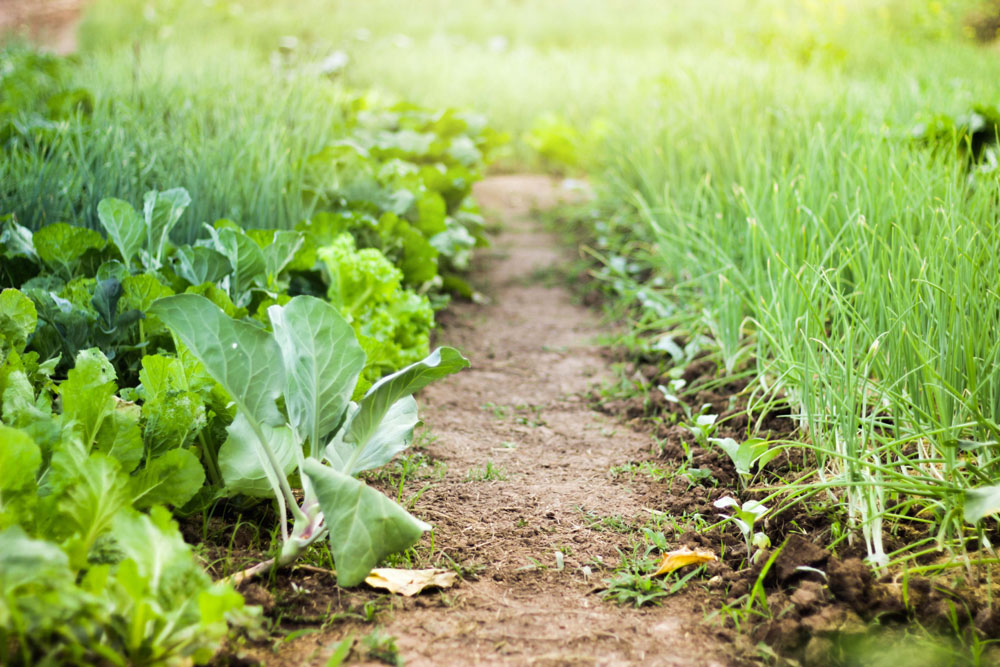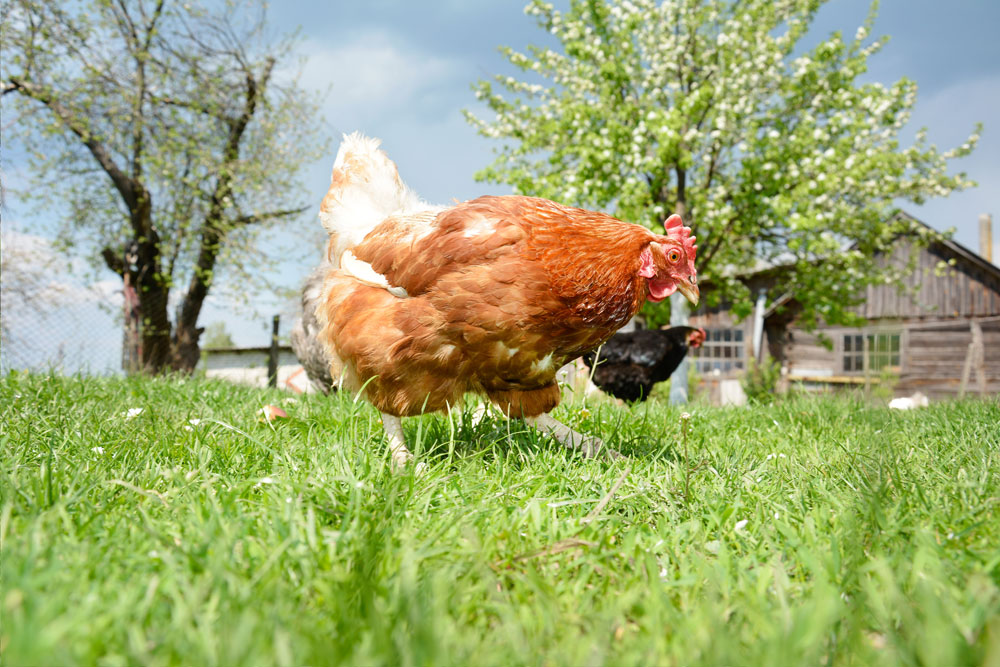Growing some of the food that you and your family consume is a great way to save money, eat organically, and live a more self-sufficient lifestyle. As food prices continue to go up, more and more families are turning to backyard farming as a way to access higher quality foods without spending a fortune. Whether you have an acre of land outside of town or a small city lot, you and your family can benefit from turning your backyard into a microfarm.

What Is Backyard Farming?
Backyard farming—also referred to as “urban farming” or “urban homesteading”—is a way for those who live in more populated cities and neighborhoods to transform part of their property into a small farm or “microfarm” as a way to grow and produce their own food. The term “backyard farming” is sometimes used to make a distinction between traditional gardening (where you might plant tomatoes or peppers in the same area of your yard each year and hope for the best) and a more deliberate and planned approach to growing your own food.
However, the term “farming” as it is being used here is not to imply that you need to grow things on a larger scale or produce crops to sell to the public. Backyard farming uses a concept known as “permaculture,” which is a system of designing an organic garden that works alongside nature to encourage the growth of fruits, vegetables, and flowers.
Creating a Backyard Farm for Your Family
In many cases, families are creating backyard farms simply to grow food for themselves. These small-scale farms can range from simple produce gardens to more sophisticated farms with various types of plants, animals, bees, and more. Any family can create their own small-scale backyard farm in the form of a container or raised bed garden; it can even include some backyard chickens, goats, or even a beehive for honey. Here are some tips for getting started:
Plant a Diverse Garden

The first step is to just get started! Plant your favorite vegetables, berries, fruit trees, and nuts in a small square-foot garden. If you are limited on space, consider growing vegetables and herbs in raised bed gardens or vertical gardens. Even if you live in an apartment, you can still grow small container gardens or even window plants. As you get more comfortable with your backyard farm, you may want to consider growing more than your family needs and sharing with your friends and neighbors or selling at your local farmers market.
Landscape with Edible Plants
Since you’re planting a garden anyway, why not use this opportunity to improve your backyard’s landscaping as well? Many plants can perform double-duty in the garden, providing you with cover, foliage, color, and visual interest while also producing food for you and your family. For example, fruit trees flower in the spring and can provide shade that keeps your house cool in the summer months, and edible flowers such as pansies and nasturtiums can make beautiful additions to summer salads.
Branch Out to Animals

If you live in a city or suburban neighborhood, it is likely that you can’t keep a cow in your backyard (and trust us—you wouldn’t want one in a small yard). However, many cities allow various types of small backyard animals, such as:
- Chickens – Backyard chickens are becoming increasingly common in many suburban and urban farms. If you are interested in harvesting your own eggs rather than buying them at the grocery store, consider starting your own chicken coop. For small backyards, keep bantam (miniature) hens.
- Quail – Quails are small and quiet and are allowed in some cities where chickens are not. Their eggs are small, but they can produce just as many as chickens do.
- Goats – Many backyard farms keep Nigerian dwarf goats, which can be milked. If you live in an area where livestock is permitted, consider keeping a couple of these goats for milk and making your own cheese.
- Sheep – Some backyard farms keep Shetland sheep, a small breed of sheep that is known for its beautiful fleece coat. Adult sheep are typically shorn once a year, and their wool is often used to make clothing and other worn items. Sheep can also be used to produce milk.
- Rabbits – Angora rabbits are commonly kept for their incredibly soft fur, which can be woven blended with sheep’s wool to create an incredibly soft material for handmade clothing and other items. They don’t require a lot of space, and they do well in cages and hutches; however, it’s best to keep them in an enclosed space that’s large enough for them to play and explore.
Most of these animals can also be raised for meat in larger backyards. Before adding animals to your backyard farm, check your city ordinances to see if livestock is permitted within city limits. If they do allow it, more than likely there will be size and/or weight limits.
Keep Bees for Honey
Honey bees are another great option for backyard farms. Most cities allow bees and, with bee populations declining due to pesticides, habitat loss, and other factors, raising bees can be beneficial not just for you but for your entire community. What’s more, bees don’t just provide honey—they also provide beeswax, which can be used in many natural beauty recipes, including lotions and balms. Beekeeping doesn’t require much time or space as long as there are plenty of available nectar sources.
Conclusion
High food costs and the growing demand for transparency and higher quality foods has led to an increase in backyard farming. Instead of spending millions of dollars making sure our lawns look good and pouring chemicals on them to make them greener and get rid of unwanted plants, we should be creating microfarms in our backyards.
If we all farmed our backyards—even in small container gardens—we could greatly increase the availability of local food and reduce food costs dramatically (and become more self-sustainable in the process).






























